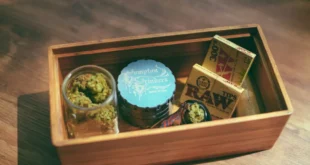Introduction of Pikruos
A Pikruos is a fascinating creature that has long been a subject of curiosity among researchers and nature enthusiasts. Native to the dense forests of South America, this unique creature has a rich history intertwined with folklore and mystique. In this article, we delve into the complete information about a Pikruos, exploring its habitat, physical features, diet, behavior, and more.
Habitat
The Pikruos primarily dwell in the lush rainforests of South America, where the dense canopies and abundant vegetation provide them with the perfect environment to thrive. They are most commonly found in the Amazon rainforest, but can also be spotted in the rainforests of Venezuela, Colombia, and Brazil.
Physical Features
A Pikruos is a remarkable creature, characterized by its vibrant and iridescent plumage. The feathers of this bird display an array of breathtaking colors, ranging from deep blues and greens to fiery reds and oranges. Its long tail feathers, often vibrant and fan-shaped, further contribute to its majestic appearance.
The Pikruos boasts an average height of 30 centimeters (12 inches) and weighs around 250 grams. Their bodies are compact and streamlined, equipped with sharp beaks and sturdy claws that assist them in navigating the dense foliage of their habitat.
Diet
It are omnivorous birds and possess a diverse diet. They primarily feed on fruits, nectar, and insects found in the rainforest. The bird’s specialized beak enables it to extract nectar from flowers, making it a crucial pollinator in its ecosystem. Additionally, Pikruos are adept hunters, catching small insects and caterpillars with their sharp beaks.
Behavior
These captivating birds are known for their unique mating rituals and melodious calls. During the mating season, male Pikruos engage in elaborate courtship displays to attract a mate. These displays involve intricate dances and vocalizations, wherein the males showcase their vibrant plumage to impress the females.
Pikruos are highly social creatures and often form small flocks, particularly during the breeding season. They exhibit strong territoriality, defending their nesting sites and foraging grounds from potential intruders.
Reproduction
Female Pikruos typically lay two to four eggs per breeding season. They construct intricate and well-hidden nests using twigs, leaves, and moss, ensuring the eggs remain protected from predators. Both male and female Pikruos take turns incubating the eggs, often alternating shifts in regular intervals.
After an incubation period of approximately three weeks, the eggs hatch, giving birth to adorable and vulnerable hatchlings. The parents dedicate themselves to feeding and protecting the young until they are capable of fending for themselves.
Conservation Status
- The Pikruos is listed as “Least Concern” on the IUCN Red List of Threatened Species.
- However, ongoing deforestation in their habitat poses a significant threat to the long-term survival of these birds.
- Conservation efforts, including the establishment of protected areas and raising awareness about the importance of these creatures, are crucial for their continued existence.
Folklore and Cultural Significance
The Pikruos holds great cultural significance for several indigenous tribes living in the region. Folklore often portrays them as mystical birds that bring good fortune and prosperity. Their vibrant feathers are widely utilized in traditional ceremonies and rituals.
Local legends often associate Pikruos with mystical abilities such as granting wishes and providing protection against evil spirits. These beliefs have fostered a deep reverence for these birds in the hearts of the people living in the surrounding communities.
Conclusion
The Pikruos is an enchanting creature that captivates all who encounter it. Its striking appearance, fascinating behaviors, and cultural significance make it a cherished part of the rich biodiversity of South America. Conservation efforts play a vital role in safeguarding these magnificent birds and ensuring future generations will have the opportunity to marvel at their beauty and significance.
Note:
Are you a content creator? If yes then we welcome bloggers & they can submit a guest post to our famous blog for free, just search in google, we are on top of search engine “ write for us + travel”, You will find “Lifeyet News”.
 Lifeyet News Lifeyet News
Lifeyet News Lifeyet News





